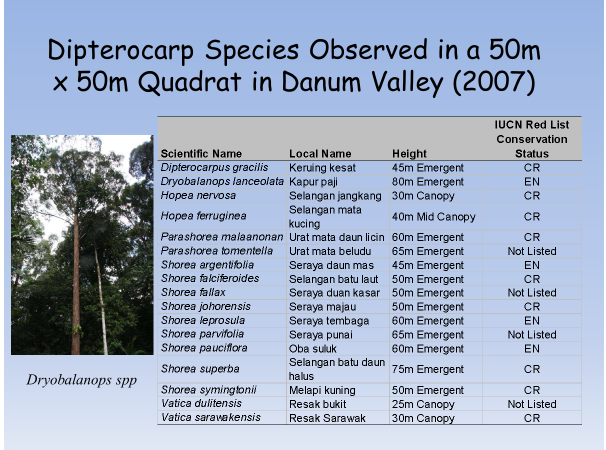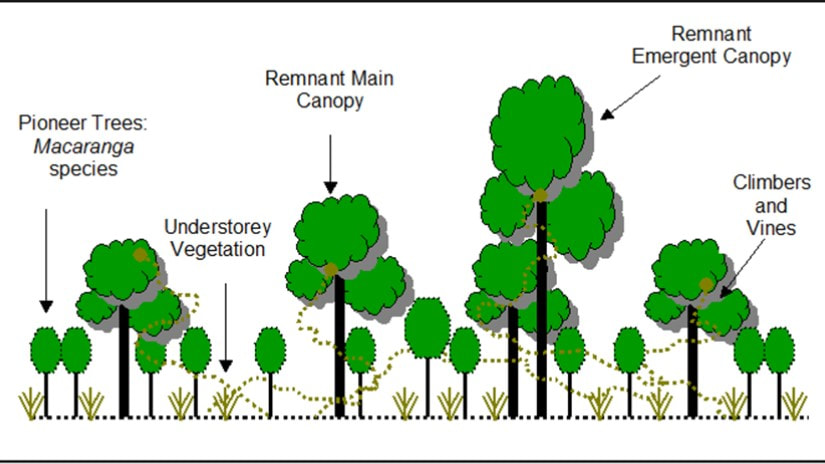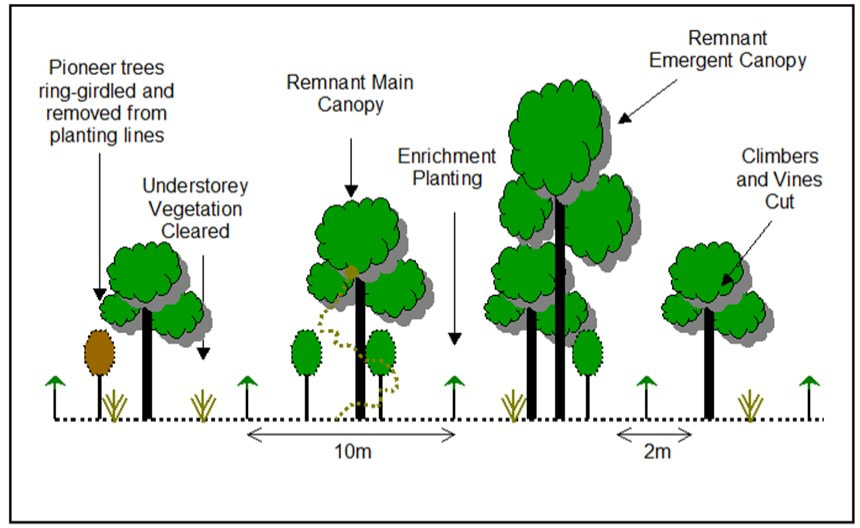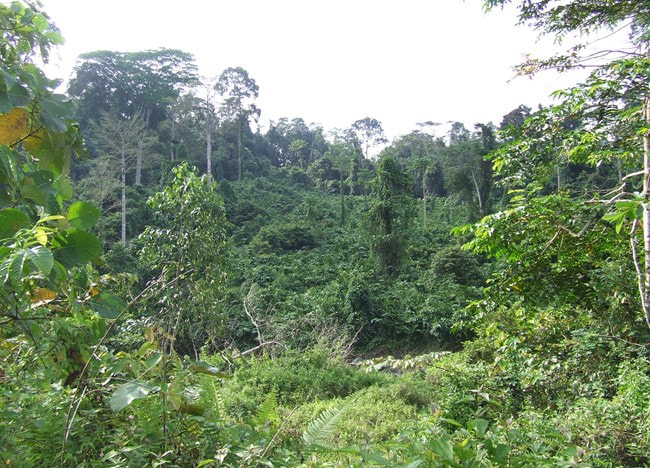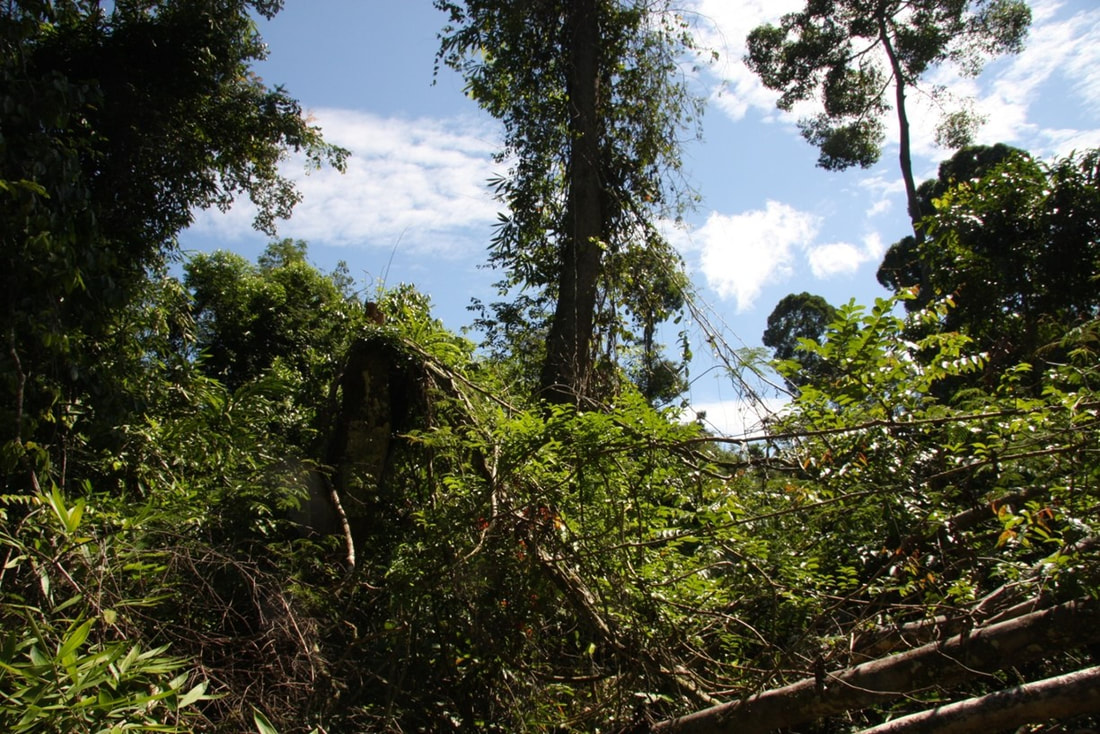Conservation of the Dipterocarps is absolutely essential as these trees are the key component of these bio-diverse regions. Providing a complex forest environment with numerous levels of vertical diversity throughout the canopy.
|
Logging and land conversion in South East Asia is occurring at such an alarming rate which exceeds the reproductive biology of the dipterocarps.
|
|
|
Conservation of dipterocarps and indeed many tropical trees is challenging compared to conserving tree species from temperate zones like the UK. This is because many tropical plants, including trees and the dipterocarps are known as recalcitrant species. This means that the seeds can not be stored in a seed bank like the millennium seed bank at Kew Gardens, Wakehust Place.
Therefore the dipterocarps require a different approach and here scientist have developed a seedling nursery. This is where seeds are collected after a masting event or where conservation workers collect young wildlings form the forest, this negates the need to wait for the seed rain. The seedlings are then grown on in modified soil under shade tunnels.
|
Top two pictures illustrate amended soil in poly-liners, the next four pictures illustrate the range of shade tunnels, the next three pictures illustrate germinating dipterocarp seedlings in the forest understory, 2010. The next three pictures illustrate a range of dipterocarp seeds, the last two show emerging radicle. Next picture is a Samba deer, this is one of the many herbivores that graze dipterocarp seeds. The
final picture illustrates an EcM fungal sheath. |
|
Conservation of dipterocarp forests is multifaceted and requires the implementation of reduced impact logging supplemented with enrichment planting of a range of dipterocarp saplings from the seedling and sapling nurseries.
Top schematic illustrates a logged coupe before enrichment planting, similar structure to the photograph on the right. The lower schematic illustrates the process of enrichment planting.
|
Top two pictures illustrate a very degraded forest coupe following clear fell logging practice of the 1970s and 1980s. The next two pictures illustrate the results of reduced impact logging, note the more complex canopy structure compared to the degraded coupes. The next two pictures illustrate further recovery from logging and the sapling bank. The next picture illustrates the regional conservation effort in Danum valley, with sign posts to the FACE nursery. The final picture illustrates enrichment planting, the sapling with the yellow tape on the stem. The arm in the far right belongs to Dr Glen Reynolds.
|
Home
Explore Agriculture
Conservation in the Farmed Environment
Explore Conservation
Lowland Dipterocarp Forests of SE Asia
Make a Difference
Private Courses
Explore Agriculture
Conservation in the Farmed Environment
Explore Conservation
Lowland Dipterocarp Forests of SE Asia
Make a Difference
Private Courses
